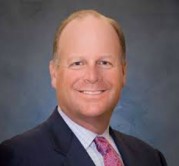Three more thoughts on succession planning success

Succession planning is a super hot topic for credit unions. Every publication you pick up announces another CEO retirement or a key executive moving on.
And this is just the beginning. My first CU Insight column of this year noted that more than 6,000 C-suite retirements are on the horizon in our industry, and gave three ideas about how to succeed with succession planning. The 2014 Report on Senior Executive Succession Planning and Talent Development from Stanford Graduate School of Business (the host for our Strategic Innovation Institute™ II in fall 2015) has given me food for thought about three more things CUs can do to boost the effectiveness of their succession planning efforts.
- Have a formal succession plan. The Stanford report finds that many companies do not have an actionable process in place to select senior executives. My thoughtis that no company is too small to have a succession plan. CUES, an organization of fewer than 50 employees, has one. The succession planning document needs to be revisited frequently as education takes place, staff turns over and the marketplace changes. (Note: CUES Supplier member and strategic provider DDJ Myers does succession planning and executive coaching.)
- Make sure the CEO and the board are communicating regularly and clearly about potential internal successors. The Stanford report finds that succession planning roles at many companies are not well defined. My thought is that the board needs to push the CEO to ensure a succession plan really exists on paper in an accessible place. You never know for sure whether you’ll have some lead time and be able to talk with an exiting executive, or whether the written succession plan will be the only guidance. If something happened to me, my board would need to act on its own to fill the CEO slot. But in an ideal situation, I would have prepared them well about the readiness of internal candidates for the job.
- Develop all the talented people in your organization. The Stanford report finds that, unfortunately, succession plans are often not connected with coaching and internal talent development programs. My thought is that CEOs and other top leaders need to have a discussion with the employees who report to them and make the results of that discussion part of the formal planning.
Ask things like: What are you looking for from a career development perspective? Is it realistic? Can our organization help get this employee to that goal? What do they have to work on to reach the goal? Then, do everything you can from the perspective of education, training and coaching to help each employee get ready for a larger role. Keep in mind that “classes” and “conferences” aren’t the only options.
At CUES, our strategy managers have learned on their feet about developing and communicating their piece of CUES’ strategic plan, including to the CUES Board. This has proved an invaluable learning experience. A few of the people you develop may get hired away, but that’s a small price to pay for having internal successors among your options when a leadership slot opens up.
Succession planning is not done to check the box that you “have a succession plan.” Rather, it exists to get good people ready to move up when the time is right, whether that’s an unexpected departure or a planned retirement (CUES strategic provider CUNA Mutual Group offers retirement plan solutions).
Boards are obligated to get the best possible candidate into an open CEO seat; similarly, CEOs have an obligation to get the best possible candidates in every other seat. The only way to do this is to be aware of who’s out there (learn more about JMFA Executive Search). Internal options need to be known and ready, and external options need to be considered as well.





